2022.07.04.5
Files > Volume 7 > Vol 7 No 4 2022
Effect of flaxseed oil dosing on fertility, growth characteristics and some physical, biochemical, and hormonal blood parameters during the early pregnancy of Awassi ewes.
1 Department of Animals Production, College Of Agriculture, University Of Tikrit;[email protected]
2 Department of Animal Production, College of Agriculture, University of Anbar, Anbar, Iraq 2; [email protected].
* Correspondence author: [email protected]; Tel.: (009647710360001)
Available from: http://dx.doi.org/10.21931/RB/2022.07.04.5
ABSTRACT
This study aims to complete the direction of experimental research in determining the effect of flaxseed oil doses on the fertility of Awassi ewes, as well as some important blood parameters to clarify the animal's physiological state during the duration of the experiment. This study was conducted in the animal field (College of Agriculture - Tikrit University) for 76 days (16 days before and 60 days after fertilization). 2-3 years have an average live weight of 51.74 kg, and the ewes were randomly divided into three treatments (each treatment was nine ewes). The three treatments were given doses of flaxseed oil at the rate of 0, 6 and 8% / kg of feed, respectively. The results showed that there was no significant difference (P≤0.05) between the treatments in the ewes' weights and physical blood characteristics during the experiment period, while it was noted that the fertility rate of the second and third treatments amounted to 66.66% for each of them, over the first treatment (55.55%). In addition, the second treatment was significantly (P≤0.05) superior in blood globulin concentration over the rest. In contrast, the third treatment was significantly (P≤0.05) superior in triglyceride concentration (62.66) mg/dL, and the first treatment showed a significant (P≤0.05) superiority. In glucose concentration (70.33) mg/dL. The following characteristics were not significantly different in total protein, albumin, urea, creatinine, ALT and AST enzymes, as well as no significant difference between treatments in the concentration of estrogen and progesterone hormones.
Keywords: flaxseed oil, Awassi ewes, fertility
INTRODUCTION
Adding fats to diets is receiving great attention as a mechanism for increasing the unsaturated fatty acids rich in omega 3 and 6 fatty acids in animal products( that are not manufactured in the body, as well as reducing the percentage of saturated fatty acids in them, so they must be included in diets, and we can find these essential fatty acids in some vegetable oils such as flaxseed oil1. A lot of recent research recommends reducing the content of short and medium-chain saturated fatty acids and increasing the proportion of long-chain unsaturated fatty acids such as linoleic acid in particular2. Therefore, unsaturated oils extracted from the seeds of oilseeds were used in the diet components3. Flaxseed oil is one of the vegetable oils rich in unsaturated fatty acids (4, 5), in addition to containing tocopherols (vitamin E) and high amounts of phenolic compounds antioxidants. Flaxseed oil also contains about 60% of the omega-3 fatty acids that have vital benefits to the body 6.. It also includes a large proportion of vitamin B complex, lecithin, and zinc, in addition to the necessary minerals for the body, such as magnesium and potassium. Scientific studies have proven that flaxseed oil helps reduce harmful fats such as LDL, VLDL and triglycerides7. 8 indicated that adding omega-3 to cow diets led to improved fertility and attributed the reason to an increase in the energy level. This positively affected the level of progesterone and estrogen necessary in maintaining pregnancy and the initial growth of the fetus by reducing the level of prostaglandin release from the uterine wall and thus reducing Fetal mortality rate9. This study was conducted to know the biological effect that the addition of fats that contain a high percentage of unsaturated fatty acids and the use of flaxseed oil can have on some productive and physiological traits
MATERIALS AND METHODS
The study was conducted in the animal field (College of Agriculture - Tikrit University) for 76 days (16 days before and 60 days after fertilization). 2-3 years have an average live weight of 51.74 kg. The ewes were divided into three groups according to their weight (each group had nine ewes). The ewes were placed in a semi-enclosed enclosure under the same environmental conditions. The ewes were allowed to graze in the morning and provided a supplementary ration of 2.5% of their body weight, divided into two morning and evening meals, and hay was provided freely. Barley, soybean, corn and bran as shown in Table (1) as a preliminary period, then the transactions were distributed to the totals as follows:
1- Control group without addition.
2- The second group (dose) with flaxseed oil (6%) / kg of dry matter was ingested.
3- The third group (dosing) with flaxseed oil (8%) for each kg of dry weight consumed.
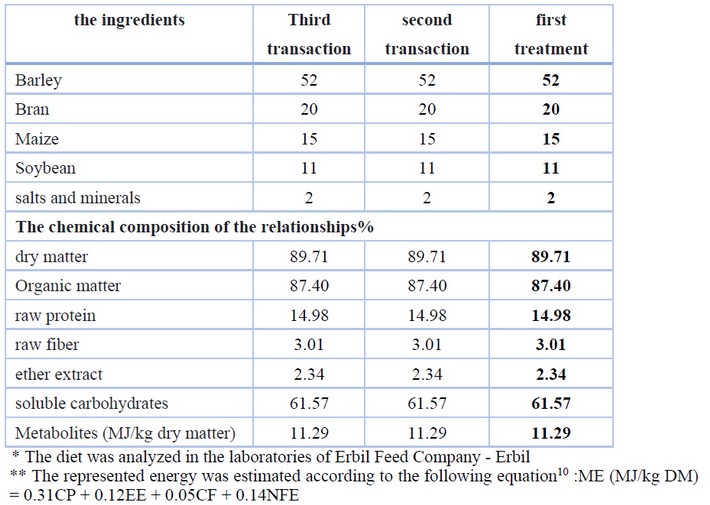
Table 1. Ingredients and chemical composition of the experimental ratio %
Vaginal sponges were used to unify the molars and were raised after 14 days of laying. Then all ewes were injected with PMSG hormone to stimulate ovulation. A pregnancy test was carried out with an ultrasound (sonar) device to confirm pregnancy by a specialized veterinarian. 10 ml of blood was withdrawn from the jugular vein, of which 2 ml were taken and placed in plastic tubes containing the anticoagulant Ethylene Diamine Tetra Acetic acid (EDTA) for use in physical blood tests. The remaining 8 ml was placed in glass tubes to separate the blood serum in a centrifuge ( 3000 cycles/minute and for 15 minutes), after which the serum was kept in the freezer (-20°C) until biochemical tests were performed on it. Glucose, cholesterol, triglycerides, total protein, albumin, globulin, blood urea and creatinine. The activity of aspartate aminotransferase (AST) and alanine (ALT) enzymes in serum was estimated using the ready-made diagnostic kit (kit) supplied by the French company Biolabo, and based on the information installed on the standard solution container.The physical characteristics of blood were calculated using the MYTHIC device from the Swiss company ORPHEE, which works on the principle of electrical impedance, to calculate the red blood cells (RBC), white blood cells (WBC), hemoglobin (Hb), rate of the combined blood cell volume (PCV) and the number of platelets. The second section was taken from the frozen blood sample (-20 m). The blood samples were analyzed in the accuracy laboratory using a device (Cobas E 411), a German-origin device from the German company Roche. The device works with chemiluminescence technology to estimate the concentration of the hormones estrogen and progesterone. The results were analyzed by the SAS statistical analysis program (11) using a complete random design (CRD), and the means were compared using Duncan's multiple range test (12) according to the following mathematical model:
Since:
yij = value of views.
µ = overall average of views.
ti = the effect of the treatment.
eij = effect of experimental error.
RESULTS
Effect of flaxseed oil dosing on fertility
The results in Table (2) indicate that there is an increase in the fertility rate in favor of the second and third treatments, 6 and 8% of flaxseed oil of body weight, reaching 66.66% for each, over the first treatment (control) 0% flaxseed oil, which was 55.55%. The reason can be attributed to the fact that adding fat directly affects fertility by modifying the energy status13. This was confirmed by14, that the use of flaxseed oil by 10% and 12% led to an increase in the concentration of progesterone in the blood.
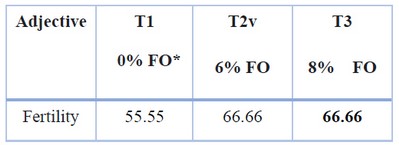
Table 2. The effect of flaxseed oil dosing on fertility
Ewe weights
The results in Table (3) indicate no significant differences between the treatments in the weights of ewes during the experiment period, as they ranged between 50.13 - 53.78 kg. The reason may be that the treatments dealt with the same quantity of the ration with the uniformity of the percentage of crude protein in the ration, which did not cause differences in the weight gain.
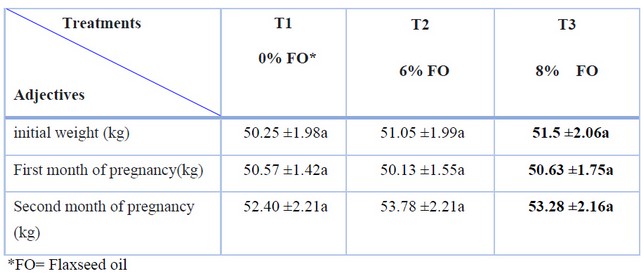
Table 3. Effect of flaxseed oil dosing on live weight of ewes (mean ± standard error)
The values that carry different letters within the same row indicate the presence of significant differences at the probability level (p ≤ 0.05
Physical blood characteristics
The results in Table (4) indicate no significant differences between the treatments in all the studied physical characteristics, which gives us evidence that the ewes were in good health throughout the experiment. From infection, maintenance of cell membranes, improvement in the synthesis of white blood cells, and improvement in the vital immune functions of the body.
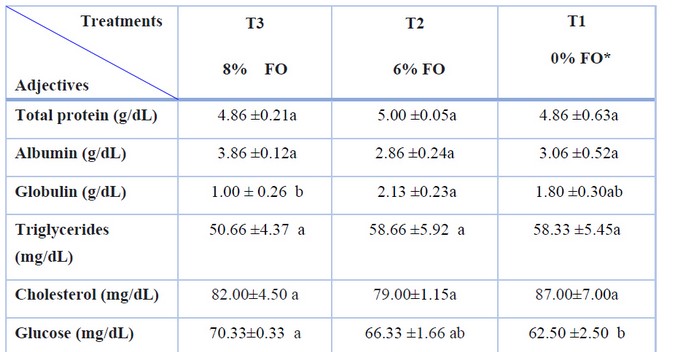
Platelet count (103 cells/ml 3)
The values that carry different letters within the same row indicate the presence of significant differences at the probability level (p ≤ 0.05).
Table 4. Effect of flaxseed oil dosing on the physical characteristics of blood (mean ± standard error).
Biochemical blood parameters
The results in Table (5) showed that there were no significant differences (p≤ 0.05) between treatments in total blood protein and albumin, which indicates the minimum nutritional effects and protein catabolism in muscles15. The results also showed no significant differences (p≤ 0.05) between the treatments in the concentration of cholesterol, although there was a clear arithmetic increase in the third treatment and that the reason for the increase in animals fed flax oil could be due to the increase in the concentration of fatty acids in the small intestine and their absorption and conversion to lipoprotein, as well as the increase in cholesterol can be attributed to an increase the level of fat in the diet16. The high level of cholesterol when adding fat to the diet may be due to the increase in the level of digestion of unsaturated fatty acids contained in these fats compared to saturated fatty acids17.
The oil treatments did not affect urea and creatinine, indicating that they did not affect kidney function because both urea and creatine in the blood are indicators of glomerular filtration in the kidneys20, on the integrity of liver function. At the same time, there was a significant (p≤0.05) superiority for the second treatment of globulin (2.13 g/dL) compared to the first and third treatments (1.00 and 1.80) g/dL, respectively. The reason may be that flaxseed oil has a role in improving the immune system and preventing infection. Many serious diseases and detoxification of the body (5). Consequently, it led to an increase in globulin, which performs several functions in the blood plasma, the most important of which is the enzymatic role that gives acquired immunity to the body and is a carrier of hormones. Innovative to destroy pathogenic organisms18.
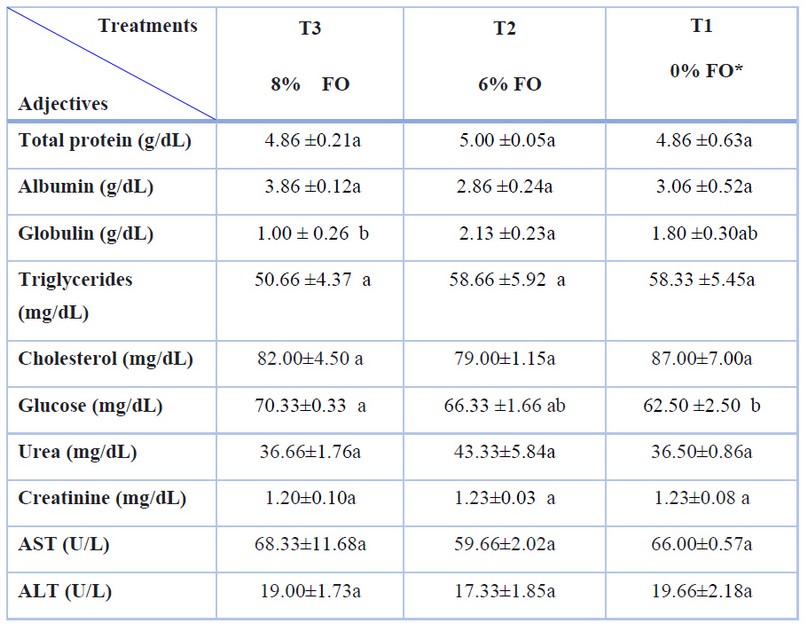
Table 5. effect of flaxseed oil treatment on blood biochemical parameters in early pregnancy (mean ± standard error).
While there were no significant differences (p≤ 0.05) between treatments in the triglycerides, the results showed an apparent arithmetic increase for flax oil treatments, which amounted to 58.66 and 58.33 mg/dL in the second and third treatments, respectively, compared to the control treatment, which amounted to 50.66 mg/dL. The increase in triglycerides can be attributed to the rise in the level of fats in the diet 16; the high level of triglycerides when adding fats to the diet may be due to the increase in the level of digestion of unsaturated fatty acids contained in these fats compared to saturated fatty acids17. In comparison, there was a significant superiority (p≤ 0.05) for the first treatment of glucose, which reached 70.33 mg/dL, compared to the second and third treatments, which amounted to 66.33 and 62.50 mg/dL, respectively. In ruminants, hepatic glucose is formed from proteins19.
Hormonal influence
The results in Table (6) indicate that there were no significant differences (p≤ 0.05) between treatments for estrogen and progesterone, with an apparent arithmetic increase for the second and third treatments over the control treatment for estrogen and progesterone. Fats or oils prepared in food increase the concentration of cholesterol, which is the basis for synthesizing steroid hormones. And that its high level in the blood may lead to a rise in the level of the hormones estrogen and progesterone21.

The values that carry different letters within the same row indicate the presence of significant differences at the probability level (p ≤ 0.05)
Table 6. Effect of treatment with flaxseed oil on the hormones estrogen and progesterone in blood serum (mean ± standard error)
DISCUSSION
When returning to what the sources have shown about the effect of adding oils, it can be said that dosing with flaxseed oil may have improved the hormonal response level in raising fertility. Unsaturated fatty acids significantly reduced stress, although they did not appear substantial because of the small number of animals22.
We can say the decrease of triglycerides concentration in blood for the third treatment may be due to the effect of omega-3, which increases the absorption of large amounts of triglycerides in fat cells, on the other side while reducing the concentration of cholesterol in the blood, which limits the change in the level of sex hormones (estrogen and progesterone), because cholesterol is the main component in the synthesis of steroid hormones.
An increase in glucose level is also observed, which may be due to the high concentration of long-chain fatty acids formed in the rumen, which leads to increased production of propionic acid, which in the blood is converted into glucose.
The omega-3 found in flaxseed oil is very effective in reducing the effectiveness of liver enzymes in the blood because it contains a high percentage of omega-3, which has a significant role in reducing liver damage and thus maintaining the average ratio of these enzymes in the blood23.
CONCLUSIONS
There is no significant indication of the importance of flaxseed oil dosing in the characteristics of weight and blood studied in the experiment. However, the ewes dosed with oil were more fertile than the treatment not dosed with oil. But it is impossible to give a definitive result because the small numbers used do not give a clear picture of the breed's fertility as important as the Iraqi Awassi sheep.
REFERENCES
1. Emmanuel, D. G. V., Jafari, A., Beauchemin, K. A., Leedle, J. A. Z., & Ametaj, B. N. Feeding live cultures of Enterococcus faecium and Saccharomyces cerevisiae induces an inflammatory response in feedlot steers. Journal of animal science. 2007, 85(1), 233-239.
2. Hervás, G., Luna, P., Mantecón, Á. R., Castañares, N., Fuente, M. Á. D. L., Juárez, M., & Frutos, P.. Effect of diet supplementation with sunflower oil on milk production, fatty acid profile and ruminal fermentation in lactating dairy ewes. . J. Dairy Res. 2008, 75: 399-405.
3. Al Mallah, O. Study Of The Effect Of Adding Sunflower Oil And Vitamin E To The Rations On Milk Production, Composition And Some Blood Parameters In Awassi Ewe. Mesopotamia Journal of Agriculture.2011, 39(4), 167-174.
4. Collomb, M., Sollberger, H., Bütikofer, U., Sieber, R., Stoll, W., & Schaeren, W. Impact of a basal diet of hay and fodder beet supplemented with rapeseed, linseed and sunflowerseed on the fatty acid composition of milk fat. International Dairy Journal. 2004,14(6), 549-559.
5. Khalifa, E. I., Abdel-Gawad, A. M., Behery, H. R., El-Emam, G. I., & El-Sawah, T. H. Reproductive and productive performance of lactating goats quaffed linseed oil and sunflower oil. Egyptian Journal of Sheep and Goat Sciences. 2016, 11(2), 15-29.
6. Xu J., Gao H., Song L., Yang W., Chen C., Deng Q., Huang Q., Yang J. and F.Huang .Flaxseed oil and α-lipoic acid combination ameliorates hepatic oxidative stress and lipid accumulation in comparison to lard. Lipids Health Dis. 2013, 1(12), 58.
7. Khotijah, L., Wiryawan K.G., Setiadi M.A., Astuti D.AReproductive performance, cholesterol and progesterone status of Garut ewes fed ration containing different levels of sun flower oil, Pakistan Journal of Nutrition .2015,14(7):388–391.
8. Ambrose D.J., Colazo M.G. and Salehi R. Can feeding fats improve reproductive performance in dairy cows. Advances in Dairy Technology.2016, 28, 177-193 .
9. Salehi, R., Colazo, M. G., Oba, M., & Ambrose, D. J. Effects of prepartum diets supplemented with rolled oilseeds on calf birth weight, postpartum health, feed intake, milk yield, and reproductive performance of dairy cows. Journal of dairy science.2016, 99(5), 3584-3597.
10. Al-Bayar, M. A., Abdulateef, S. M., Farhan, S. M., Shawkat, S. S. & Mohammed, Th. T. Role of Nitroglycerine injection in Japanese Quail (Coturnix japonica) testes tissues parameters. Indian Journal of Ecology. 2020, 47 (10): 251-255.
11. SAS. Statistical analyzing system. Institute Inc. and World Programming Limited (England and Wales High Court (Chancery Division) 2010.
12. Dancan, D. B. Multiple range and multiple tests. Biometrics, 1955, 11, 1-42.
13. Didarkhah, M., Vatandoost, M., Dirandeh, E., & Dadashpour Davachi, N. Effects of flaxseed-rich diet on reproductive performance in estrous-synchronized baluchi ewes. Archives of Razi Institute .2020, 75(3), 397.
14. Badiei A, Aliverdilou A, Amanlou H, Beheshti M, Dirandeh E, Masoumi R, et al. Postpartum responses of dairy cows supplemented with n-3 fatty acids for different durations during the peripartal period. J Dairy Sci.2014,97(10):6391–9.
15. Etim, N.N., Enyenihi, G.E., Williams, M.E., Udo, M.D., Offiong, E.E.A.. Haematological Parameters: Indicators of the Physiological Status of Farm Animals. Br. J. Sci. .2013, 10, 33–45 .
16. Petit HV. Digestion, milk production, milk composition, and blood composition of dairy cows fed whole flaxseed. J Dairy Sci.. 2002, 85: 1482–1490.
17. Nik- Khah, A., H. Sedeghi- Panah, ZareShahneh , P.Jamie.Effect of dietary fat level and source on feed lot performance , carcass characteristics and digestibility of kordian yearling bulls .Iranian, J. Agric. Sci..2003, 32: 637- 648.
18. Guyton, A. C. ; Hall, J. E. Textbook of Medical Physiology. 11th ed. elsevier saundsrs.2006, Philadelphia, Pennsylvania.
19. Oh, Y.K., Eun, J.S., Lee, S.C., Chu, G.M., Lee, S.S., Moon, Y.H., .Responses of Blood Glucose, Insulin, Glucagon, and Fatty Acids to Intraruminal Infusion of Propionate in Hanwoo. Asian-Australasian J. Anim. Sci..2014, 28, 200–206.
20. Hosten, AO BUN and Creatinine, in: Walker, H.K., Hall, W.D., Hurst, J.W. (Eds.), 4 Clinical Methods: The History, Physical, and Laboratory Examinations. Butterworths, Boston, MA.1990, pp. 874–878.
21. Hawkins, D. E., Niswender, K. D., Oss, G. M., Moeller, C. L., Odde, K. G., Sawyer, H. R., & Niswender, G. D. An increase in serum lipids increases luteal lipid content and alters the disappearance rate of progesterone in cows. Journal of Animal Science.1995, 73(2), 541-545.
22. Alsamaraie, A.A., Nuaman, A.I.,. The Effect of Oral Dosage with Different Amounts of Linseed Oil on Some Blood Physical and Biochemical Parameters of Iraqi Awassi Lambs. . Annals of Agric. Sci., Moshtohor.2019, 57(4), 1013-1018
23. AL-Jobbery,H.R., Noaman,A.I.,.Effect of flaxseed oil drench with different ratio of concentrate to roughage on some blood parameters of Iraqi Awassi lambs. . Journal of Agricultural Science.2022, 22(1), 96-104
Received: 20 July 2022 / Accepted: 15 October 2022 / Published:15 November 2022
Citation: Noaman A I, Khalaf R M, Emad GH, Al-Abbasy, Mohammed Th. T. Effect of flaxseed oil dosing on fertility, growth characteristics and some physical, biochemical, and hormonal blood parameters during the early pregnancy of Awassi ewes. Revis Bionatura 2022;7(4) 5. http://dx.doi.org/10.21931/RB/2022.07.04.5
